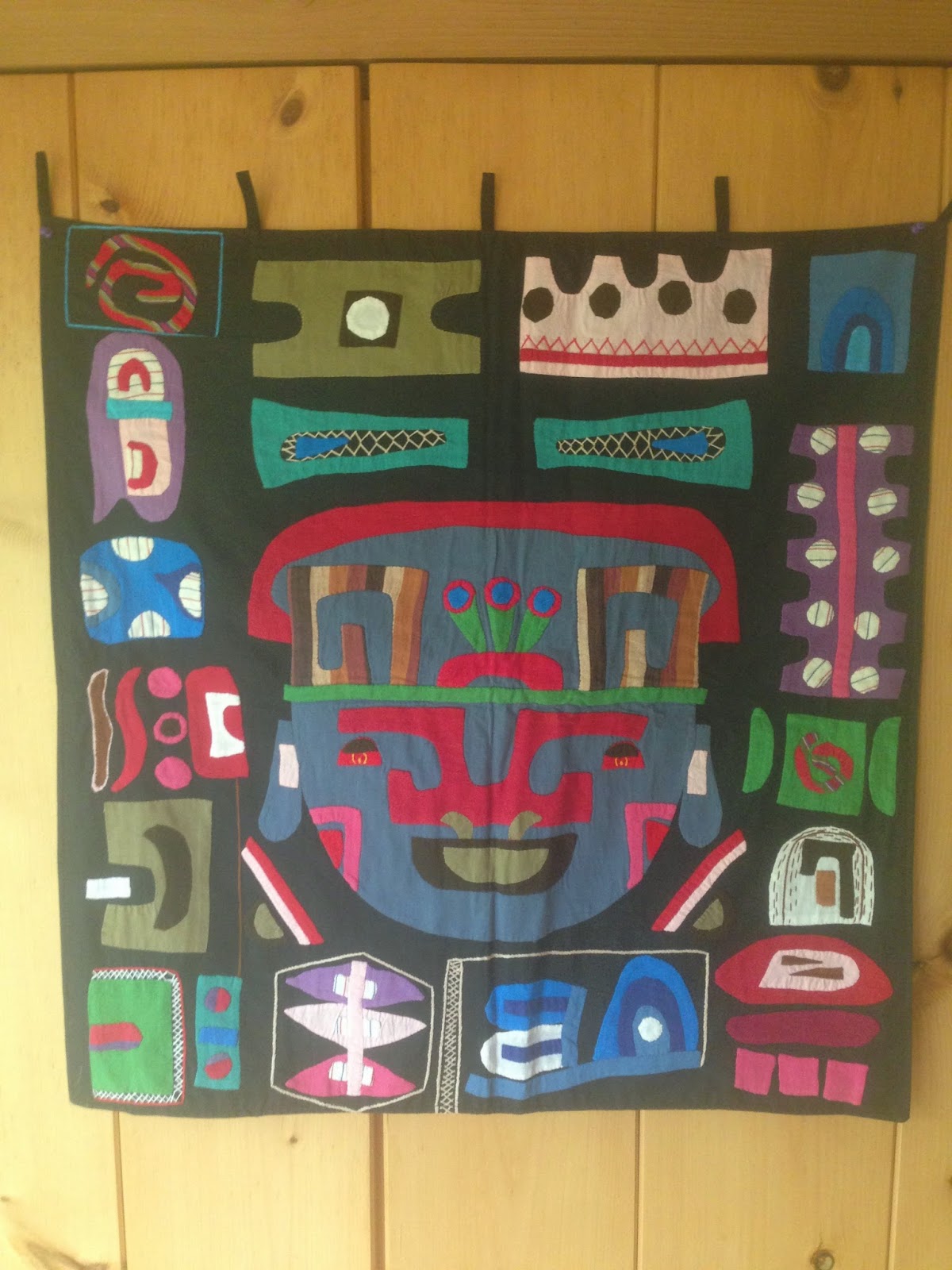A treat for Halloween! Gwen and I have been talking about her extensive collection of textiles from around the world. The technique and imagery is always fascinating. Learning of the tradition and circumstances which influence the needlework adds to my appreciation of the stitchery and the maker. Plus, bravo to Grady Marston for the photography. pjb
 |
| Pre-Columbian God 34" x 34.5" c. 1994 |
El Salvador
Central American countries are known for their colorful textile work, the majority of which is either weaving or embroidery. The first two panels shown are appliqued and are contemporary work made around 1994. While neither of these panels are traditional pieces, they both reflect the artists homeland. The woman who stitched the Pre-Columbian God (seen above) returned to traditional representational shapes while the second panel depicts a typical rural scene.
 |
| countryside 35.5" x 35.5" c. 1994 |
Both panels are worked with applique and embellished with embroidery on a black cotton background and both are backed with black fabric. The backing on the Pre-Columbian God panel was machine quilted before it was attached to the top side of the panel. The quilting consists of large concentric circles in the middle and straight lines radiating out from the circle. The Countryside panel is very minimally machine quilted through both layers. On both hangings the edges are turned to the inside and neatly machine stitched ¼” from the edge.
Both panels have loops along the top for hanging. These panels were made by a women’s cooperative called Nahuit, a sewing group organized with the intent of helping single mothers support their families.
 |
| Childbearing 16.5" 16.6" c. 1990 |
The third textile is a small embroidered panel worked in a satin stitch. This is a traditional needle art form celebrating the magic of childbearing. Embroidered panels like this are made by Patzun women from the Guteftion area in El Salvador. It is customary for women to make a panel every time they become pregnant. The mounds represent the months of pregnancy. Mothers also stitched images from the natural world intending to prepare the child for the world they would enter.
This tradition seems to indicate that these women were preparing themselves to do a serious job of mothering. I found this really touching.
Thanks to Gwen and Grady for this post. For more time with Gwen visit gwenmarston.com








